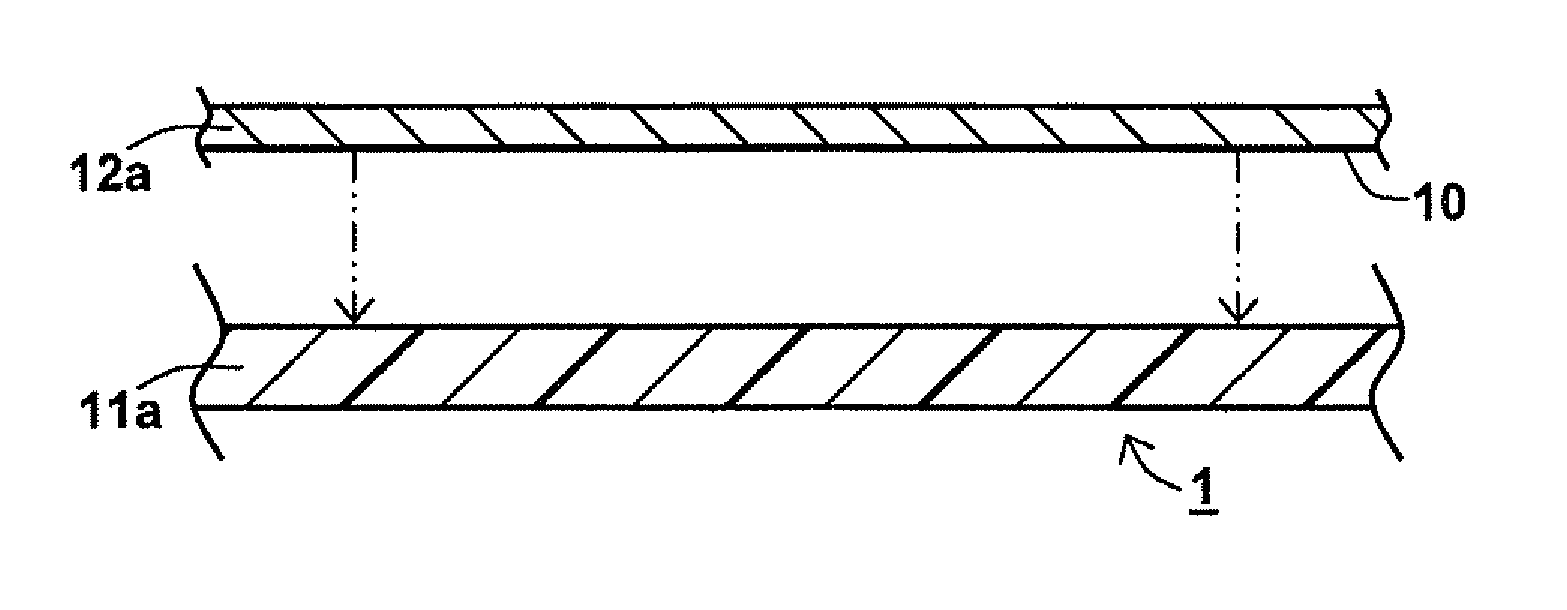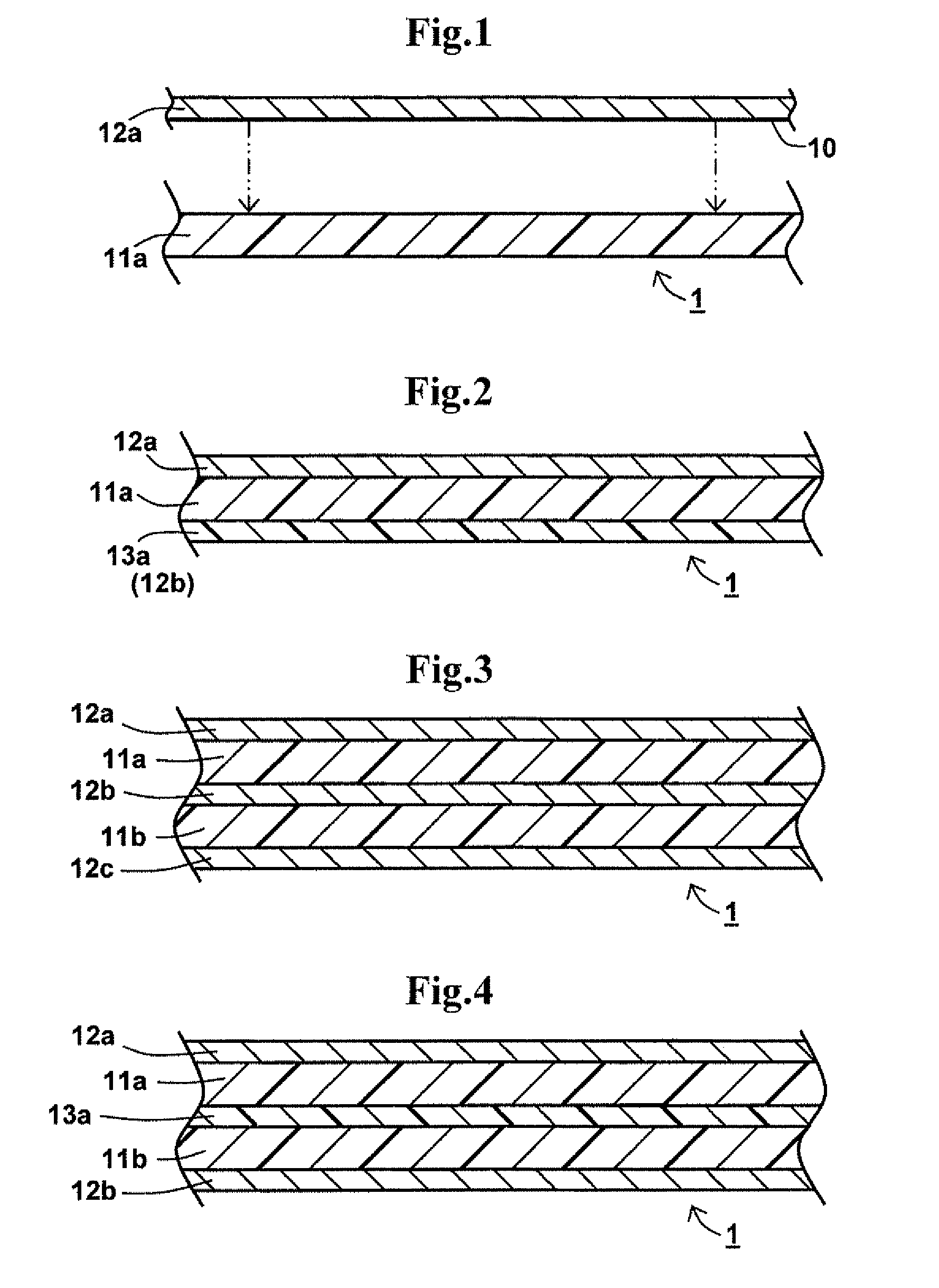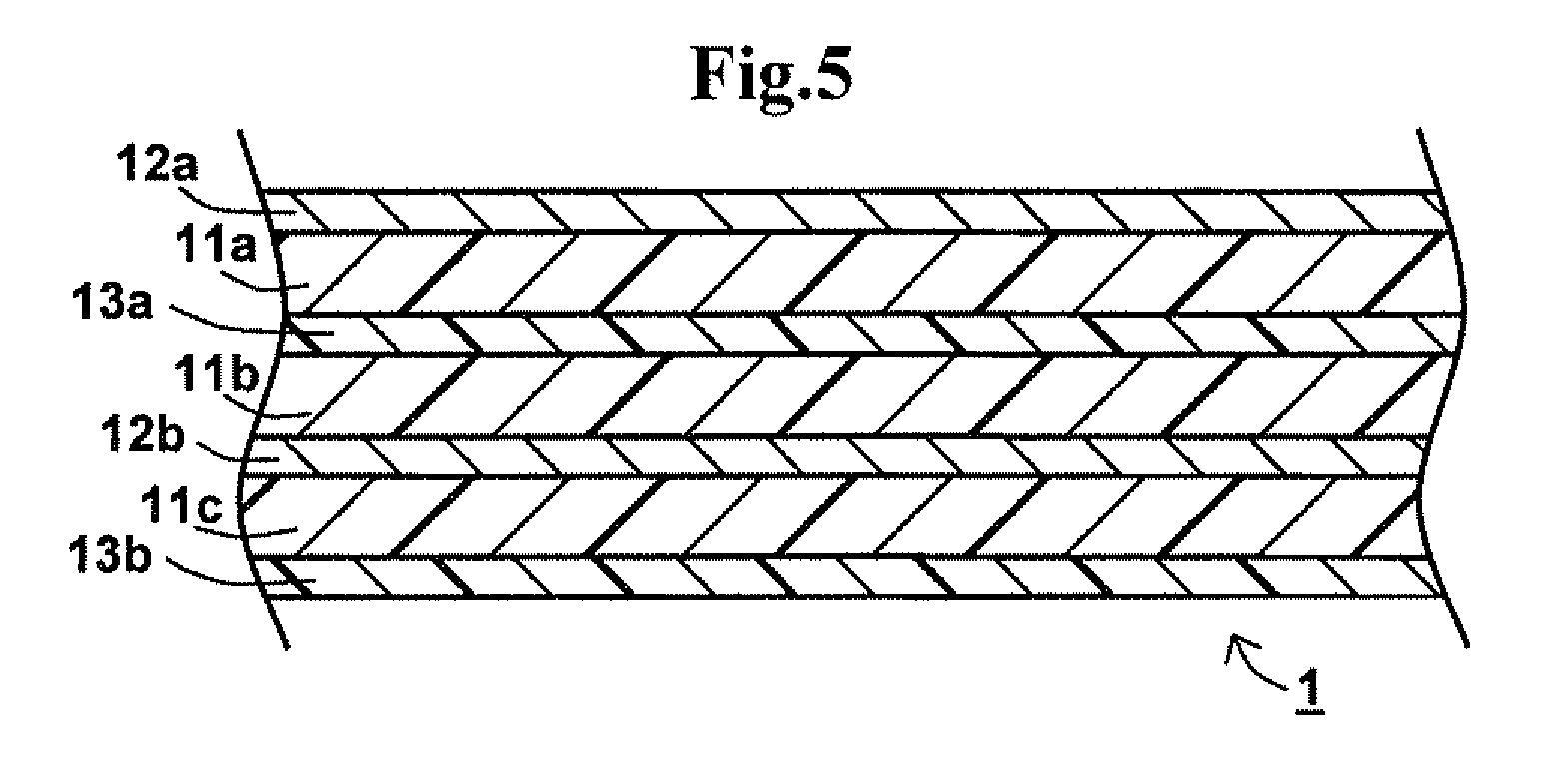Three-dimensional silicone-rubber bonded object
- Summary
- Abstract
- Description
- Claims
- Application Information
AI Technical Summary
Benefits of technology
Problems solved by technology
Method used
Image
Examples
preparatory example 2
A Silicone Rubber Elastic Substrate
[0121]Manufacturing method of an elastic substrate molded using an addition crosslinking (CQA) type-silicone rubber is as follows. 100 parts by weight of commercially available rubber compound (A and B fluids of SE-6721 produced by Dow Corning Toray Silicone Co., Ltd., that is blended with a silicone raw rubber of both of addition crosslinking type vinyl-terminated polydimethylsiloxane and H-terminated polydimethylsiloxane), filler, a plasticizer, colorant etc.) was put into a mold, then molded therein under compression by pressurization at 160° C. for 20 min. to obtain a plate-like three-dimensional silicone rubber elastic substrate having a dimension of 2 mm×30 mm×50 mm as a three-dimensional silicone rubber molded article. This silicone rubber had physical properties of a hardness of 45, tensile strength: 8.0 MPa, elongation: 300%, tearing strength: 18N / mm, compression set: 15% (150° C.×22 hrs).
preparatory example 3
A Silicone Rubber Elastic Substrate
[0122]Manufacturing method of a molded elastic substrate using a condensation-crosslinking (CCC) type-silicone rubber is as follows. 100 parts by weight of condensation-crosslinking type silanol-terminated polydimethylsiloxane (DMS-S33 produced by Chisso Corporation, molecular weight: 43,500), 40 parts by weight of hexamethyl silazane-treated silica, 4 parts by weight of CH3Si (OCOCH3)3 and 0.1 parts by weight of dibutyl tin maleate were mixed to prepare a silicone rubber compound. This silicone rubber compound was put into a mold, then heated at 140° C. for 20 min. to obtain a plate-like three-dimensional silicone rubber elastic substrate as a three-dimensional silicone rubber molded article. This silicone rubber had physical properties of a hardness of 40, tensile strength: 7.8 MPa, elongation: 340%, tearing strength: 18N / mm, compression set: 18% (150° C.×22 hrs).
(Preparation of an Adherend Substrate)
[0123]Next, as materials of a typical metal, r...
example 1
Manufacture of Silicone-Rubber Bonded Object
[0125]At an end portion having a width of 2 cm of each of the peroxide crosslinking type three-dimensional silicone rubber elastic substrates manufactured in Preparatory Example 1 and each of the four kinds of adherend substrates of Al, EP resin, glass and SBR rubber, were covered by a tape respectively. Then they were subjected to a corona discharge treatment using an apparatus for corona surface modification under an atmospheric pressure (CoronaMaster, trade name, produced by Shinko Electric & Instrumentation Co., Ltd.), under conditions of power source: AC 100V, gap length: 3 mm, output voltage: 9 kV (surface potential), electric power: 18 W, oscillating frequency: 20 kHz, temperature: 20° C., moving speed: 2 m / min., times of movement: 3 times. Immediately after this treatment, each three-dimensional silicone rubber elastic substrate was placed on the adherend substrate and they were put into a vacuum packing bag for home use and deaera...
PUM
| Property | Measurement | Unit |
|---|---|---|
| Temperature | aaaaa | aaaaa |
| Peel strength | aaaaa | aaaaa |
| Peel strength | aaaaa | aaaaa |
Abstract
Description
Claims
Application Information
 Login to View More
Login to View More - R&D
- Intellectual Property
- Life Sciences
- Materials
- Tech Scout
- Unparalleled Data Quality
- Higher Quality Content
- 60% Fewer Hallucinations
Browse by: Latest US Patents, China's latest patents, Technical Efficacy Thesaurus, Application Domain, Technology Topic, Popular Technical Reports.
© 2025 PatSnap. All rights reserved.Legal|Privacy policy|Modern Slavery Act Transparency Statement|Sitemap|About US| Contact US: help@patsnap.com



